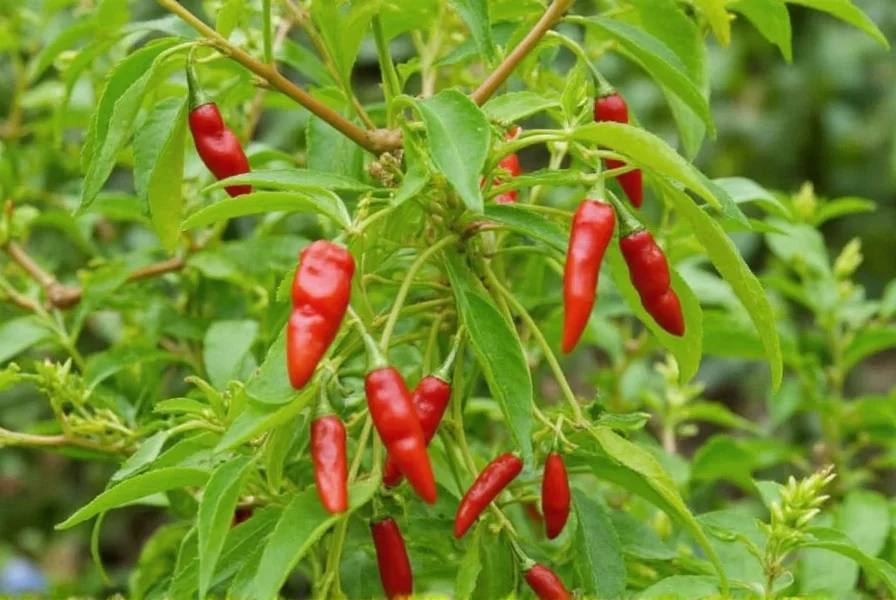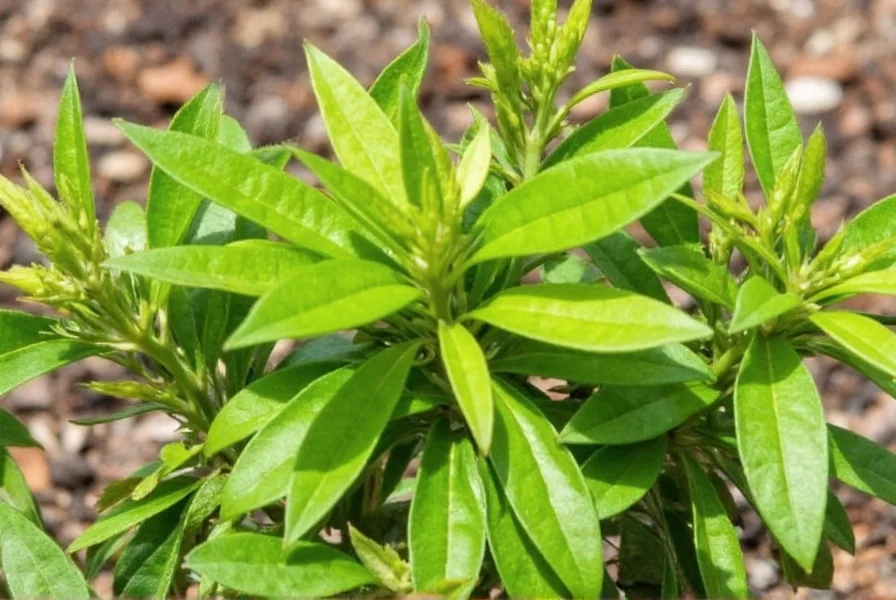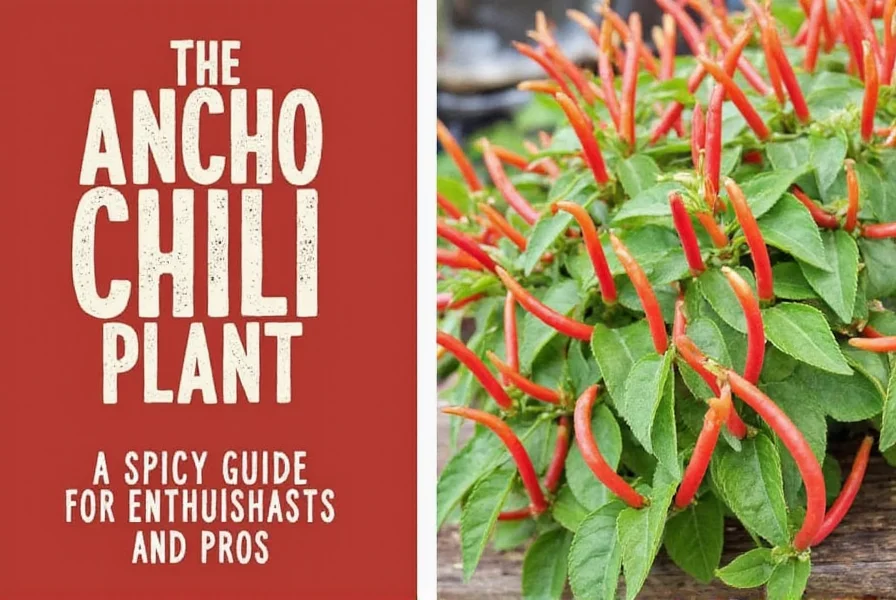Table of Contents
Introduction to the Ancho Chili Plant
The ancho chili is a versatile and beloved pepper that has become a staple in kitchens worldwide. Known for its rich, smoky flavor and deep red color, it's actually the dried form of the poblano pepper. This transformation gives it a unique sweet and smoky profile that makes it ideal for sauces, stews, and even desserts.

Unlike many other chilies, ancho chilies are mild to medium heat (1,000-2,000 Scoville Heat Units), making them accessible to a wide range of palates. They're also incredibly versatile, working well in both savory and sweet applications. Whether you're a home gardener or a culinary enthusiast, understanding how to grow, buy, and use ancho chilies can elevate your cooking significantly.
A Step-by-Step Growing Guide
Here's how to successfully grow your own ancho chili plants:
- Climate Requirements: Ancho chilies thrive in warm, sunny conditions with temperatures between 70°F and 90°F (21°C-32°C). They need at least 6-8 hours of direct sunlight daily.
- Soil Preparation: Use well-draining soil with a pH between 6.0 and 7.0. Incorporate compost for better fertility and moisture retention.
- Planting Process: Start seeds indoors 6-8 weeks before the last frost. Transplant seedlings outdoors when soil temperature reaches at least 60°F (15°C).
- Watering Schedule: Water deeply once or twice weekly, keeping soil consistently moist but not waterlogged. Avoid wetting leaves to prevent disease.
- Fertilization: Apply balanced fertilizer every 4-6 weeks. Use a formula higher in phosphorus when flowering begins to promote fruit production.
- Pest Management: Watch for aphids, spider mites, and whiteflies. Use organic solutions like neem oil or insecticidal soap when needed.

Harvest peppers when they're fully mature (dark red and slightly wrinkled). For fresh use, pick when they're still firm; for drying, allow them to fully ripen on the plant.
Essential Cooking Tips with Ancho Chilies
Unlock the full potential of ancho chilies with these professional cooking techniques:
- Rehydration Method: Soak dried ancho chilies in hot water for 20-30 minutes until soft. This activates their full flavor profile and makes them easier to blend.
- Roasting Technique: For enhanced smokiness, roast whole chilies over medium heat until blistered (about 2 minutes per side). Remove stems and seeds before using.
- Sauce Preparation: Ancho chilies are perfect for mole sauce. Blend rehydrated chilies with tomatoes, garlic, onions, spices, and a touch of chocolate for authentic Mexican flavor.
- Heat Management: While mild, ancho chilies still contain capsaicin. For controlled heat, remove seeds and membranes before use. Pair with hotter peppers like chipotle for balanced spice levels.
- Dessert Applications: Add a pinch of ground ancho chili to chocolate desserts for depth of flavor. Try it in brownies, hot chocolate, or even ice cream for a surprising twist.

Remember: Ancho chilies work best when their sweetness and smokiness complement other ingredients rather than overpower them. Start with small amounts and adjust to taste.
The Ultimate Buying Guide for Ancho Chilies
When purchasing ancho chilies, consider these factors for optimal quality:
| Type | Description | Best Uses |
|---|---|---|
| Whole Dried Ancho Chilies | Authentic form requiring rehydration. Look for deep red color, slight wrinkling, and pliable texture. | Homemade sauces, salsas, and slow-cooked dishes where flavor development is key. |
| Ancho Chili Powder | Ground form that may contain additives. Check for pure ancho without fillers or excessive salt. | Seasoning rubs, marinades, and spice blends where quick incorporation is needed. |
| Pre-Soaked Ancho Chilies | Convenience option that's already softened. Verify freshness through smell and texture. | Quick sauces, soups, and stews where time is limited. |

Quality Indicators to Look For
- Color: Rich, deep red without brown spots or dullness
- Texture: Slightly flexible (not brittle) with visible veins
- Aroma: Sweet, smoky scent without musty or moldy notes
- Source: Prefer products from Mexico or California for authentic flavor
- Packaging: Airtight containers or vacuum-sealed bags to preserve freshness
Top Recommended Products
- Organic Ancho Chili Pods (100% Pure): Ideal for health-conscious cooks who want to avoid pesticides and additives.
- Smoked Ancho Chili Powder (Single-Origin): Offers consistent smoky flavor without artificial additives.
- Pre-Soaked Ancho Chili Paste: Convenient for quick meal preparation while maintaining authentic flavor.
Comparing Ancho Chilies with Other Common Chilis
| Chili Type | Heat Level (SHU) | Flavor Profile | Best Uses |
|---|---|---|---|
| Ancho | 1,000-2,000 | Smoky, sweet, earthy | Mole sauces, stews, desserts, and balanced spice applications |
| Poblano | 1,000-1,500 | Grassy, mild, slightly vegetal | Stuffed peppers, fresh salsas, and roasting |
| Chipotle | 2,500-8,000 | Smoky, spicy, tangy | Barbecue rubs, smoky sauces, and grilled dishes |
| Guajillo | 2,500-5,000 | Earthy, fruity, slightly tart | Marinades, salsas, and soups |
| Pasilla | 1,000-2,500 | Earthy, woody, slightly sweet | Enchiladas, stews, and complex sauces |

Ancho chilies stand out for their balanced flavor profile - sweet enough for desserts yet smoky enough for savory applications. They're more versatile than many other chilis due to their mild heat and complex flavor notes.
Frequently Asked Questions About Ancho Chili Plants
What's the difference between ancho chilies and poblano peppers?
Ancho chilies are the dried form of fully ripe poblano peppers. When poblano peppers mature to a dark red color and are dried, they become ancho chilies. This drying process intensifies their sweetness and adds smoky notes while reducing their fresh, grassy character.
How long does it take for ancho chili plant to produce fruit?
Ancho chili plants typically begin producing fruit 60-90 days after transplanting outdoors. The peppers start green and take an additional 2-3 weeks to fully ripen to their characteristic dark red color for drying.
How hot are ancho chilies on the Scoville scale?
Ancho chilies range from 1,000 to 2,000 Scoville Heat Units (SHU), placing them in the mild to medium heat category. For reference, a jalapeño ranges from 2,500-8,000 SHU, making anchos generally milder than many common hot peppers.
Can I grow ancho chili plants in containers?
Yes, ancho chili plants thrive in containers. Use a pot at least 12-14 inches in diameter with drainage holes. Container-grown plants require more frequent watering and may need supplemental fertilizer every 2-3 weeks during peak growing season.
How should I store dried ancho chilies?
Store dried ancho chilies in an airtight container in a cool, dark place. Properly stored, they maintain quality for 6-12 months. For extended shelf life (1-2 years), store in the refrigerator or freezer. Always check for moisture before storing to prevent mold.
What are the health benefits of ancho chilies?
Ancho chilies are rich in vitamins A and C, antioxidants, and capsaicin. They may help boost metabolism, reduce inflammation, support heart health, and provide pain relief. Their mild heat makes them accessible for health benefits without excessive spice.
Can I substitute ancho chilies in recipes if I can't find them?
Yes, but with adjustments. For similar mild heat and smoky flavor, use guajillo chilies with a touch of smoked paprika. For a closer match, combine pasilla chilies with a small amount of chipotle. Powder substitutes work best when mixing regular chili powder with smoked paprika.
Why aren't my ancho chili plants producing many fruits?
Common reasons include insufficient sunlight (6-8 hours daily), inconsistent watering, nutrient deficiencies, or temperature extremes. Hand-pollinating flowers with a small brush can help increase fruit set if natural pollinators are scarce. Also, avoid over-fertilizing with nitrogen, which promotes leaf growth at the expense of fruiting.
Conclusion
The ancho chili is a culinary treasure that bridges the gap between mild and spicy flavors. Its unique sweet and smoky profile makes it incredibly versatile across countless dishes. Whether you're growing your own plants or purchasing quality products, understanding how to properly use ancho chilies can transform your cooking.
From traditional Mexican mole sauces to innovative dessert applications, ancho chilies offer something for every palate. Their health benefits and adaptability make them a valuable addition to any kitchen. Start with small quantities and experiment - you might discover new favorite recipes that highlight this remarkable chili's unique qualities.
















 浙公网安备
33010002000092号
浙公网安备
33010002000092号 浙B2-20120091-4
浙B2-20120091-4